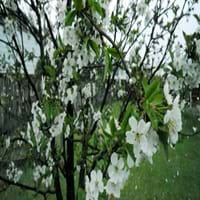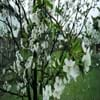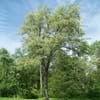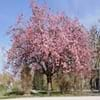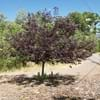Life Span
Perennial
Perennial
Type
Fruit
Flowering Plants, Herbaceous Perennial
Types
Büttnera Czerwona, Hedelfinger Sweet Cherry
Bowl of Beauty, Laura Dessert
Number of Varieties
Not Available
Habitat
Woodland Garden Canopy
Dappled Shade, Woodland Garden
USDA Hardiness Zone
5-8
4-8
Sunset Zone
2a, 2b, 6, 7, 14, 15
A3, 1a, 1b, 2a, 2b, 3a, 3b, 4, 5, 6, 7, 8, 9, 10, 11, 12, 13, 14, 15, 16, 17, 18, 19, 20, 22
Habit
Upright/Erect
Clump-Forming
Flower Color
Not Available
White, Light Pink
Flower Color Modifier
Bicolor
Bicolor
Fruit Color
Not Available
Not Available
Leaf Color in Spring
Not Available
Red, Dark Green, Bronze
Leaf Color in Summer
Not Available
Green, Dark Green
Leaf Color in Fall
Not Available
Green, Dark Green, Bronze
Leaf Color in Winter
Not Available
Not Available
Leaf Shape
broad, flat
Lance shaped
Plant Season
Spring, Summer, Fall
Spring, Summer
Sunlight
Full Sun, Partial Sun
Full Sun, Partial Sun
Type of Soil
Clay, Loam, Sand
Clay, Loam, Sand
The pH of Soil
Acidic, Neutral
Acidic, Neutral, Alkaline
Soil Drainage
Well drained
Well drained
Bloom Time
Spring
Late Spring, Early Summer
Tolerances
Not Available
Not Available
Where to Plant?
Ground
Ground
How to Plant?
Semi-hardwood and hardwood cuttings
Root Division, Seedlings
Plant Maintenance
Medium
Medium
Watering Requirements
Water 1 in. per week during the active growing period, Water more in summer
Allow soil to be completely dry in between waterings, Water Deeply
In Summer
Lots of watering
Lots of watering
In Spring
Moderate
Moderate
In Winter
Average Water
Average Water
Soil pH
Acidic, Neutral
Acidic, Neutral, Alkaline
Soil Type
Clay, Loam, Sand
Clay, Loam, Sand
Soil Drainage Capacity
Well drained
Well drained
Sun Exposure
Full Sun, Partial Sun
Full Sun, Partial Sun
Pruning
Remove dead branches, Remove thin branches
Remove damaged leaves, Remove dead branches, Remove dead leaves
Fertilizers
A 10 pound bag of 16-4-8 fertilizer
5-10-10 fertilizer
Pests and Diseases
Aphids, Borers, Mites
Leaf Blotch, Ringspot virus, Stem rot, Tip blight, Verticillium Wilt
Plant Tolerance
Drought
Drought
Flower Petal Number
Not Available
Double
Foliage Texture
Not Available
Coarse
Foliage Sheen
Not Available
Glossy
Attracts
Birds, Flies
Ants, Butterflies, Not Available
Allergy
Mild Allergen, Vomiting
no allergic reactions
Aesthetic Uses
Beautification, Used in parkland
Cut Flowers, Showy Purposes
Beauty Benefits
Anti-ageing, Good Cleanser, Good for skin, Promotes Healthy Hair
Not Available
Environmental Uses
Air purification
Air purification
Medicinal Uses
Antitussive, Astringent, Diuretic, Tonic
Alterative, Analgesic, Anodyne, anti inflammatory, Antibacterial, Antiseptic, Hypotensive, Tonic
Part of Plant Used
Fruits, Seeds
Root, Seeds, Stem
Other Uses
Used for making green dye, Wood is used for making furniture
Eaten in a broth, Powdered and mixed with tea
Used As Indoor Plant
No
Yes
Used As Outdoor Plant
Yes
Yes
Garden Design
Edible, Fruit / Fruit Tree, Shade Trees, Topiary / Bonsai / Espalier
Cutflower, Feature Plant, Foundation, Mixed Border
Botanical Name
PRUNUS avium
PAEONIA lactiflora 'Shirley Temple'
Common Name
Sweet Cherry
Double Pink Peony, Garden Peony
In Hindi
मीठी चेरी
Double Pink Peony
In German
Süße Kirsche
Doppelte rosa Pfingstrosen
In French
Cerise sucrée
Double Rose pivoine
In Spanish
Cereza dulce
Doble Pink Peony
In Greek
γλυκό κεράσι
Διπλό Ροζ Παιωνία
In Portuguese
Cereja doce
Duplo Pink Peony
In Polish
Słodka Wiśnia
Podwójne Pink Peony
In Latin
dulcis cerasus
Geminus Pink AGLAOPHOTIS
Phylum
Magnoliophyta
Magnoliophyta
Class
Magnoliopsida
Magnoliopsida
Order
Rosales
Dilleniales
Family
Rosaceae
Paeoniaceae
Clade
Angiosperms, Eudicots, Rosids
Angiosperms, Core eudicots, Eudicots
Tribe
Amygdaleae
Not Available
Subfamily
Amygdaloideae
Not Available
Number of Species
Not Available
Not Available
Importance of Sweet Cherry and Double Pink Peony
Want to have the most appropriate plant for your garden? You might want to know the importance of Sweet Cherry and Double Pink Peony. Basically, these two plants vary in many aspects. Compare Sweet Cherry and Double Pink Peony as they differ in many characteristics such as their life, care, benefits, facts, etc. Every gardener must at least have the slightest clue about the plants he wants to plant in his garden. Compare their benefits, which differ in many ways like facts and uses. The medicinal use of Sweet Cherry is Antitussive, Astringent, Diuretic and Tonic whereas of Double Pink Peony is Alterative, Analgesic, Anodyne, anti inflammatory, Antibacterial, Antiseptic, Hypotensive and Tonic. Sweet Cherry has beauty benefits as follows: Anti-ageing, Good Cleanser, Good for skin and Promotes Healthy Hair while Double Pink Peony has beauty benefits as follows: Anti-ageing, Good Cleanser, Good for skin and Promotes Healthy Hair.
Compare Facts of Sweet Cherry vs Double Pink Peony
How to choose the best garden plant for your garden depending upon its facts? Here garden plant comparison will help you to solve this query. Compare the facts of Sweet Cherry vs Double Pink Peony and know which one to choose. As garden plants have benefits and other uses, allergy is also a major drawback of plants for some people. Allergic reactions of Sweet Cherry are Mild Allergen and Vomiting whereas of Double Pink Peony have no allergic reactions respectively. Having a fruit bearing plant in your garden can be a plus point of your garden. Sweet Cherry has showy fruits and Double Pink Peony has no showy fruits. Also Sweet Cherry is not flowering and Double Pink Peony is not flowering . You can compare Sweet Cherry and Double Pink Peony facts and facts of other plants too.
